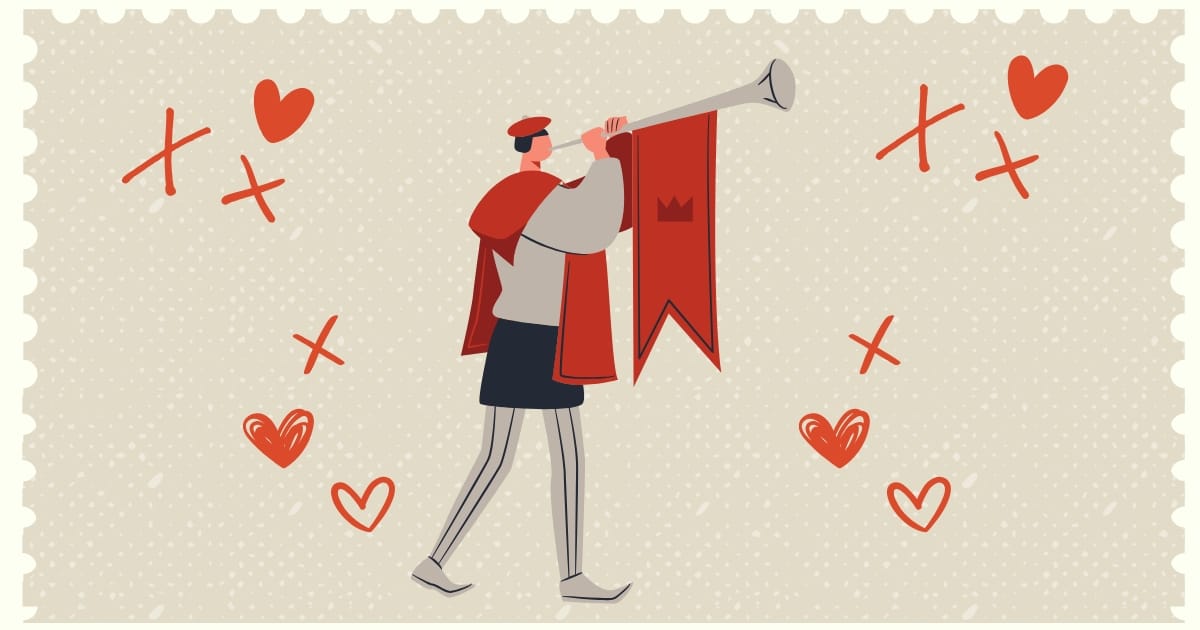
Chivalry and Courtly Love: Valentine’s Day in the Middle Ages
Valentine’s Day in the Middle Ages was not the commercialized holiday of flowers, chocolates, and extravagant gifts that we know today. Instead, it was a celebration steeped in the ideals of chivalry, courtly love, and poetic expression. During this time, the holiday became synonymous with romance through the blending of Christian traditions, pagan festivals, and the emerging culture of romanticized love.
The Origins of Valentine’s Day in Medieval Europe
The origins of Valentine’s Day can be traced back to Saint Valentine, a third-century Roman martyr whose feast day was celebrated on February 14. By the Middle Ages, his association with love and courtship began to take shape. Historians speculate that Valentine’s Day coincided with the ancient Roman festival of Lupercalia, a fertility celebration, and the popular belief that birds began mating on February 14.
Geoffrey Chaucer, the famed English poet, played a pivotal role in romanticizing the day. In his 14th-century poem, “Parliament of Fowls,” Chaucer writes:
“For this was on seynt Volantynys day, Whan euery bryd comyth there to chese his make.”
This passage marks one of the first known associations of Valentine’s Day with romantic love, suggesting that it was a day when birds (and humans) sought their mates.
The Culture of Courtly Love
The Middle Ages were defined by the concept of courtly love, a highly stylized and ritualized form of romance. This tradition flourished in the royal courts of Europe, where knights and noblewomen engaged in elaborate displays of affection, often expressed through poetry, songs, and acts of chivalry.
Courtly love often emphasized unattainable or forbidden relationships. A knight might dedicate his feats of bravery to a lady who was often married to another, symbolizing his pure and selfless devotion. The relationship was idealized and rarely consummated, existing instead as a poetic and emotional bond.
This culture influenced Valentine’s Day celebrations in the Middle Ages, where expressing love through letters, poetry, and symbolic gestures became common among the aristocracy.
Love Letters: The Medieval Valentine
The tradition of exchanging love notes can also be traced back to the Middle Ages. These early Valentines were handwritten and often contained heartfelt expressions of affection. One of the oldest known Valentine messages comes from Charles, Duke of Orléans, who wrote a poem to his wife while imprisoned in the Tower of London in 1415:
“Je suis déjà d’amour tanné,
Ma très douce Valentinée.”
(Translation: “I am already sick of love, my very gentle Valentine.”)
This heartfelt missive is now preserved in the British Library, a testament to the enduring power of words to convey love.
Symbolism and Tokens of Love
During the Middle Ages, Valentine’s Day was marked by the exchange of symbolic gifts. Knights often presented their ladies with tokens of their affection, such as handkerchiefs, rings, or flowers. In some traditions, a lover might carve their beloved’s name onto a tree or create a love knot—a design of intertwined loops symbolizing eternal affection.
These gestures reflected the deep influence of chivalric ideals, where actions spoke as loudly as words in demonstrating devotion.
Famous Love Stories of the Middle Ages
The Middle Ages also brought us some of the most enduring tales of romance, many of which embodied the spirit of Valentine’s Day. One such story is the tragic love of Tristan and Isolde, a tale of forbidden passion and sacrifice. Another is the legend of Lancelot and Guinevere, where chivalry and love collided with loyalty and betrayal in the Arthurian legends.
These stories captured the imagination of medieval audiences and served as inspiration for Valentine’s Day celebrations that honored love’s complexities and triumphs.
Music and Love in the Middle Ages
Music was an integral part of medieval Valentine’s Day traditions. Troubadours and minstrels roamed the courts and villages, singing ballads of love and devotion. One popular song from the period, “A l’entrada del tens clar,” is a lively celebration of love’s arrival in the spring, underscoring the connection between romance and the renewal of nature.
Modern Echoes of Medieval Valentine’s Day
Though centuries have passed, the traditions of Valentine’s Day in the Middle Ages resonate in modern celebrations. Handwritten cards, romantic poetry, and symbolic gifts all have roots in the chivalric and courtly customs of medieval Europe. The emphasis on expressing love through meaningful gestures remains central to the holiday.
A Final Thought
Valentine’s Day in the Middle Ages reminds us of love’s timeless appeal. It was a day for knights to pledge their loyalty, poets to weave their words, and lovers to cherish the beauty of their bond. As we celebrate Valentine’s Day today, we carry forward a legacy of romance that has endured for centuries—a testament to love’s enduring power.
So, as you pen a Valentine’s card or share a special moment with your loved one, remember the medieval lovers who walked the same path, guided by the light of chivalry and the poetry of the heart.
Check our exclusive valentine special digital products: https://quantumdot.online/shop/
